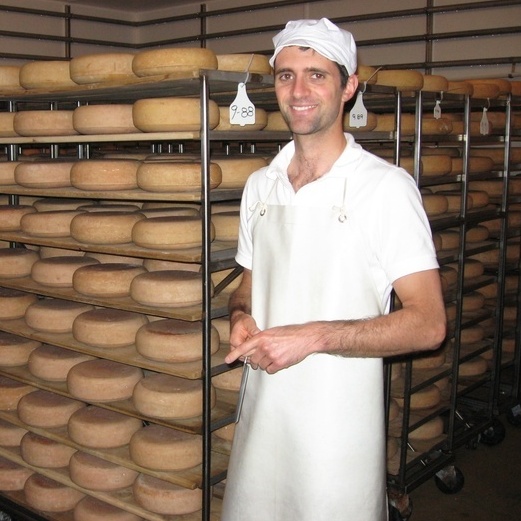Discovering Melbourne Made Cheese: Why Floridia Cheese Is a Must-Try
Discovering Melbourne Made Cheese: Why Floridia Cheese Is a Must-Try
Blog Article
Unlocking the Secrets of Artisanal Cheese Making: A Detailed Do It Yourself Guide
In the realm of cooking workmanship, artisanal cheese making stands as a testament to the fragile balance in between custom and advancement. As we get started on this journey to demystify the art of creating elegant cheeses, we are encountered with a tapestry of tricks and abilities waiting to be unwinded.
Choosing the Right Milk
When starting the journey of artisanal cheese production, the option of milk plays a crucial function in identifying the quality and attributes of the end product. The sort of milk picked impacts the flavor, appearance, and generally account of celebrity. Raw milk, right from the animal, is liked by numerous artisanal cheesemakers because of its distinct mix of enzymes, bacteria, and flavor substances. Nonetheless, using raw milk features guidelines and dangers, making pasteurized milk a more secure choice for beginners.
When selecting milk for cheese making, it is essential to think about the fat content. Higher fat web content in milk can result in a creamier and richer cheese, while lower fat content may bring about a drier and stronger structure. In addition, the resource of the milk, whether from cows, goats, lamb, or buffalo, contributes unique flavors and qualities to celebrity (Floridia Cheese Melbourne). Each type of milk brings its very own subtleties, allowing for a vast array of cheese ranges to be crafted based upon the picked milk. Ultimately, the option of milk is a basic choice that establishes the foundation for an effective artisanal cheese-making endeavor.
Culturing and Coagulating
To initiate the cheese-making process, the essential actions of culturing and coagulating should be carefully implemented to change milk into curds and whey. Culturing involves introducing advantageous germs to the milk, which then starts the fermentation process. These bacteria convert lactose (milk sugar) right into lactic acid, creating the acidic atmosphere needed for coagulation. The kind of culture utilized can dramatically affect the taste, structure, and ripening of the final cheese product.

The timing and temperature level control during culturing and coagulation are crucial factors that influence the final end result of the cheese. Correct implementation of these steps is necessary to guarantee the preferred structure, taste, and consistency of the artisanal cheese being created.
Draining Pipes and Pushing Curds
After the milk proteins have coagulated and the curds have been cut to release whey, the following critical step in artisanal cheese making involves draining and pressing the curds to accomplish the wanted texture and uniformity of the last cheese item. The time for draining can vary depending on the kind of cheese being made and the desired dampness Read Full Report material.
As soon as the curds have completely drained pipes, the next action is pressing. Pushing helps eliminate any remaining whey and compacts the curds to develop a solid cheese wheel. Pressing can be done making use of specialized cheese presses that apply consistent and gentle pressure over a period of time. The duration and pressure applied during pressing will affect the final appearance of the cheese, from creamy and soft to tough and firm. Correct pressing and draining pipes are critical actions that considerably influence the high quality and features of the artisanal cheese being created.
Aging and Flavor Methods
Carrying out meticulous aging and flavor techniques is crucial in boosting the deepness and intricacy of artisanal cheeses, raising their preference profiles to exquisite degrees of refinement and refinement. Aging plays a vital duty in creating the special tastes and appearances that identify artisanal cheeses. Throughout the aging process, cheeses are saved in carefully controlled atmospheres where aspects such as air flow, moisture, and temperature level are manipulated to urge the development of beneficial mold and mildews and germs. This controlled setting enables the cheese to mature slowly, developing complex scents and abundant tastes.
Seasoning methods also contribute considerably to the final preference of artisanal cheeses. Cheesemakers might select to introduce extra tastes by incorporating components such as herbs, seasonings, and even fruits into the cheese throughout the production procedure. Additionally, some cheeses are washed or scrubed with various fluids, such as salt water or alcohol, to boost their structures and flavors.
Covering and Storing Cheeses

Final Thought
In final thought, understanding the art of artisanal cheese making involves thoroughly picking the best milk, adhering to specific culturing and coagulating processes, draining address and pressing curds properly, and making use of different aging and flavoring strategies. Remember to wrap and keep your cheeses appropriately to make certain optimum taste and structure advancement.
Each type of milk brings its own nuances, enabling for a wide range of cheese selections to be crafted based on the selected milk.After the milk proteins have actually coagulated and the curds have been cut to release whey, the next essential action in artisanal cheese making involves draining and pushing the curds to attain the preferred texture and consistency of the last cheese product. Most cheeses need to be wrapped in wax paper or cheese paper to allow them to breathe while safeguarding them from drying out. For cheeses that require to proceed aging, such as bloomy peels or cleaned skins, ensure they are stored in a trendy environment like a cheese cavern or a fridge set to the proper temperature level. By paying focus to the covering and storage of artisanal cheeses, cheese manufacturers and fanatics can preserve the integrity of these specials and totally appreciate their intricate tastes.
Report this page